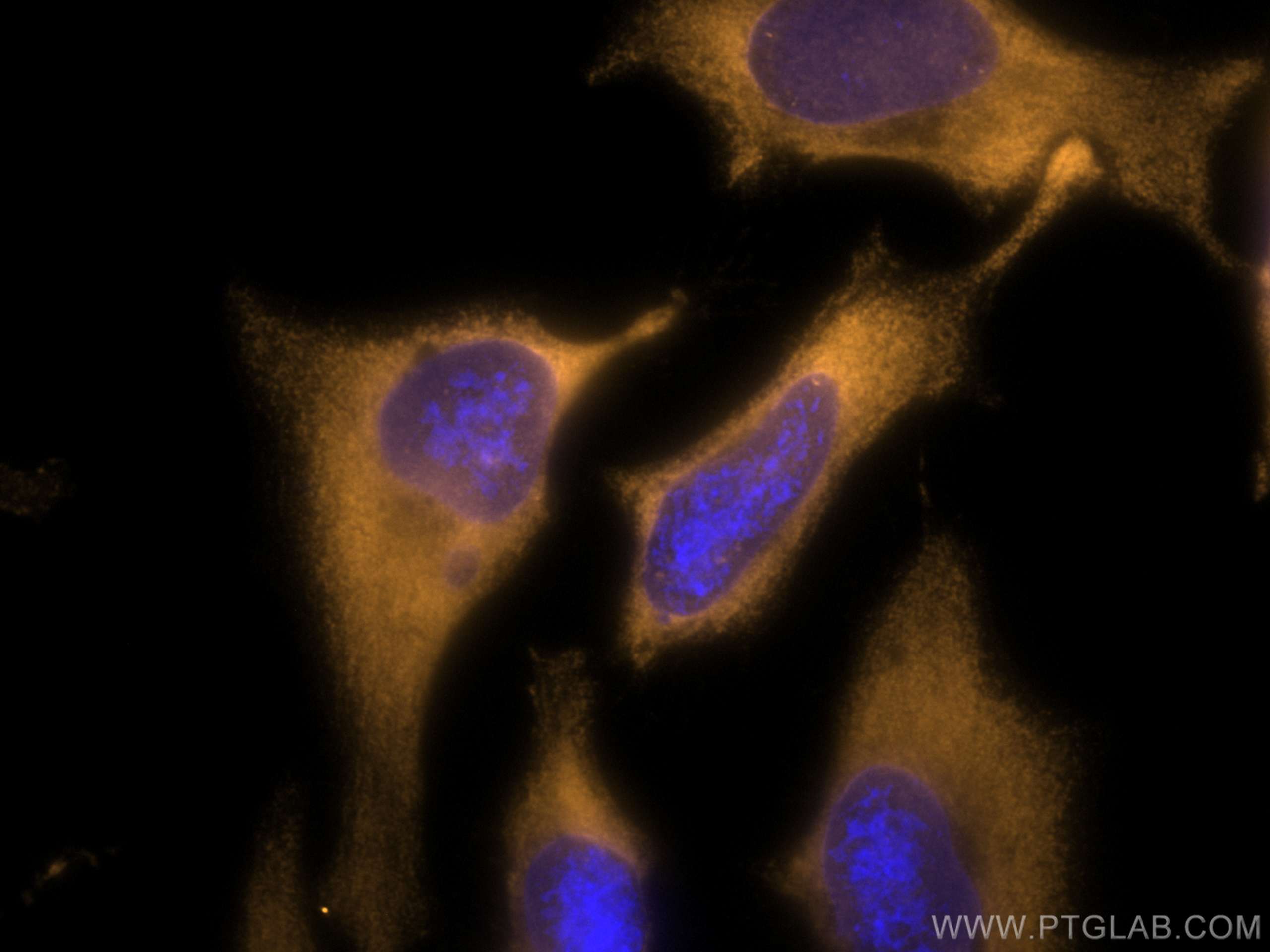CAPRIN1 Monoklonaler Antikörper
CAPRIN1 Monoklonal Antikörper für IF/ICC
Wirt / Isotyp
Maus / IgG1
Getestete Reaktivität
human
Anwendung
IF/ICC
Konjugation
CoraLite®555 Fluorescent Dye
CloneNo.
6B10F11
Kat-Nr. : CL555-66352
Synonyme
Geprüfte Anwendungen
| Erfolgreiche Detektion in IF/ICC | HeLa-Zellen |
Empfohlene Verdünnung
| Anwendung | Verdünnung |
|---|---|
| Immunfluoreszenz (IF)/ICC | IF/ICC : 1:50-1:500 |
| It is recommended that this reagent should be titrated in each testing system to obtain optimal results. | |
| Sample-dependent, check data in validation data gallery | |
Produktinformation
CL555-66352 bindet in IF/ICC CAPRIN1 und zeigt Reaktivität mit human
| Getestete Reaktivität | human |
| Wirt / Isotyp | Maus / IgG1 |
| Klonalität | Monoklonal |
| Typ | Antikörper |
| Immunogen | CAPRIN1 fusion protein Ag7413 |
| Vollständiger Name | cell cycle associated protein 1 |
| Berechnetes Molekulargewicht | 78 kDa |
| Beobachtetes Molekulargewicht | 116 kDa |
| GenBank-Zugangsnummer | BC001731 |
| Gene symbol | CAPRIN1 |
| Gene ID (NCBI) | 4076 |
| Konjugation | CoraLite®555 Fluorescent Dye |
| Excitation/Emission maxima wavelengths | 557 nm / 570nm |
| Form | Liquid |
| Reinigungsmethode | Protein-G-Reinigung |
| Lagerungspuffer | PBS with 50% glycerol, 0.05% Proclin300, 0.5% BSA |
| Lagerungsbedingungen | Bei -20°C lagern. Vor Licht schützen. Nach dem Versand ein Jahr stabil. Aliquotieren ist bei -20oC Lagerung nicht notwendig. 20ul Größen enthalten 0,1% BSA. |
Hintergrundinformationen
CAPRIN1(Caprin-1) is a cytoplasmic phosphoprotein which may regulate the transport and translation of mRNAs of proteins involved in synaptic plasticity in neurons and cell proliferation and migration in multiple cell types. Its levels, except in the brain, are tightly correlated with cellular proliferation. Suppression of expression of human Caprin-1 resulted in slowing of the proliferation rate,which suggests its essential for normal cellular proliferation.
Protokolle
| PRODUKTSPEZIFISCHE PROTOKOLLE | |
|---|---|
| IF protocol for CL555 CAPRIN1 antibody CL555-66352 | Protokoll herunterladen |
| STANDARD-PROTOKOLLE | |
|---|---|
| Klicken Sie hier, um unsere Standardprotokolle anzuzeigen |


